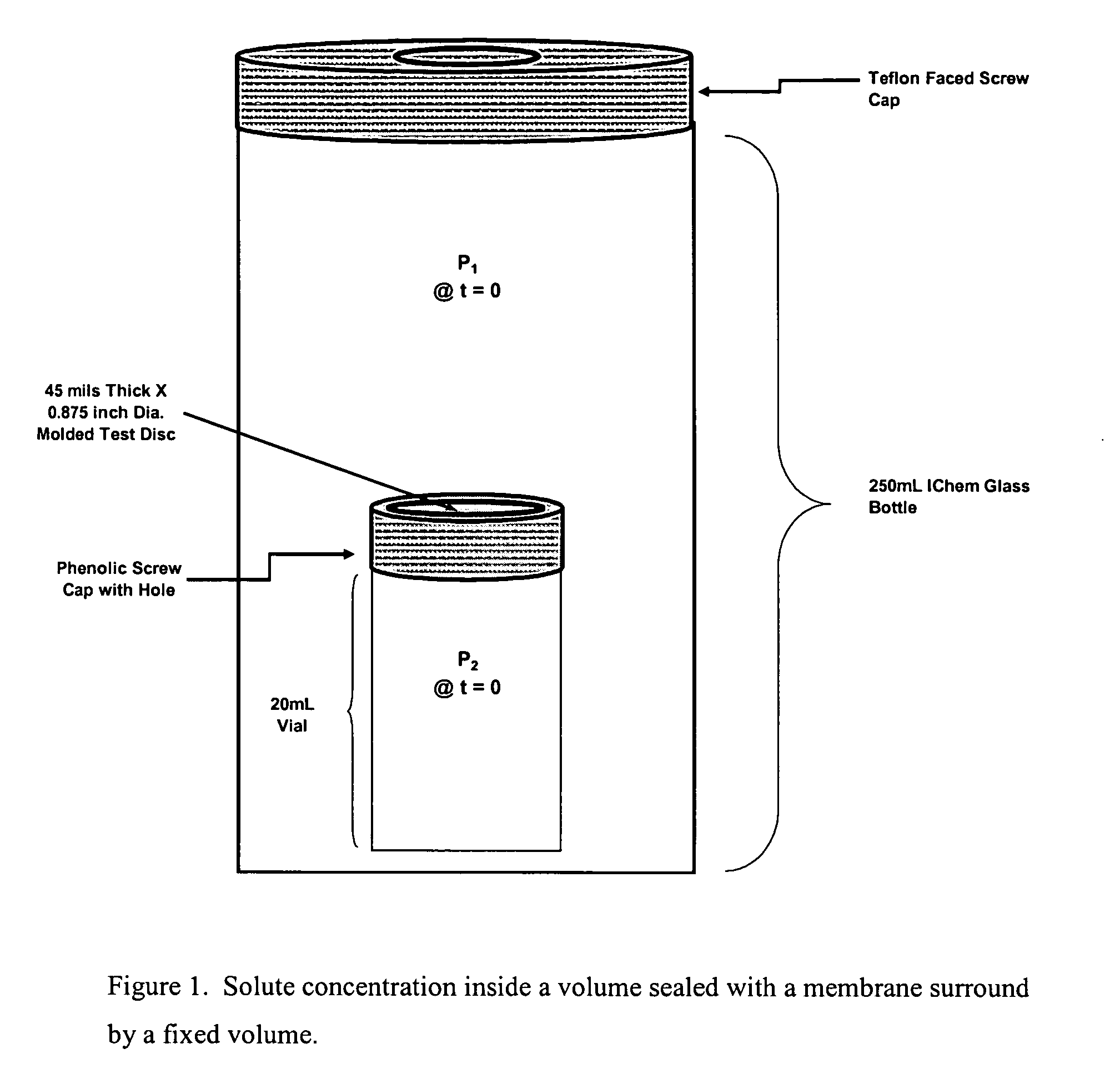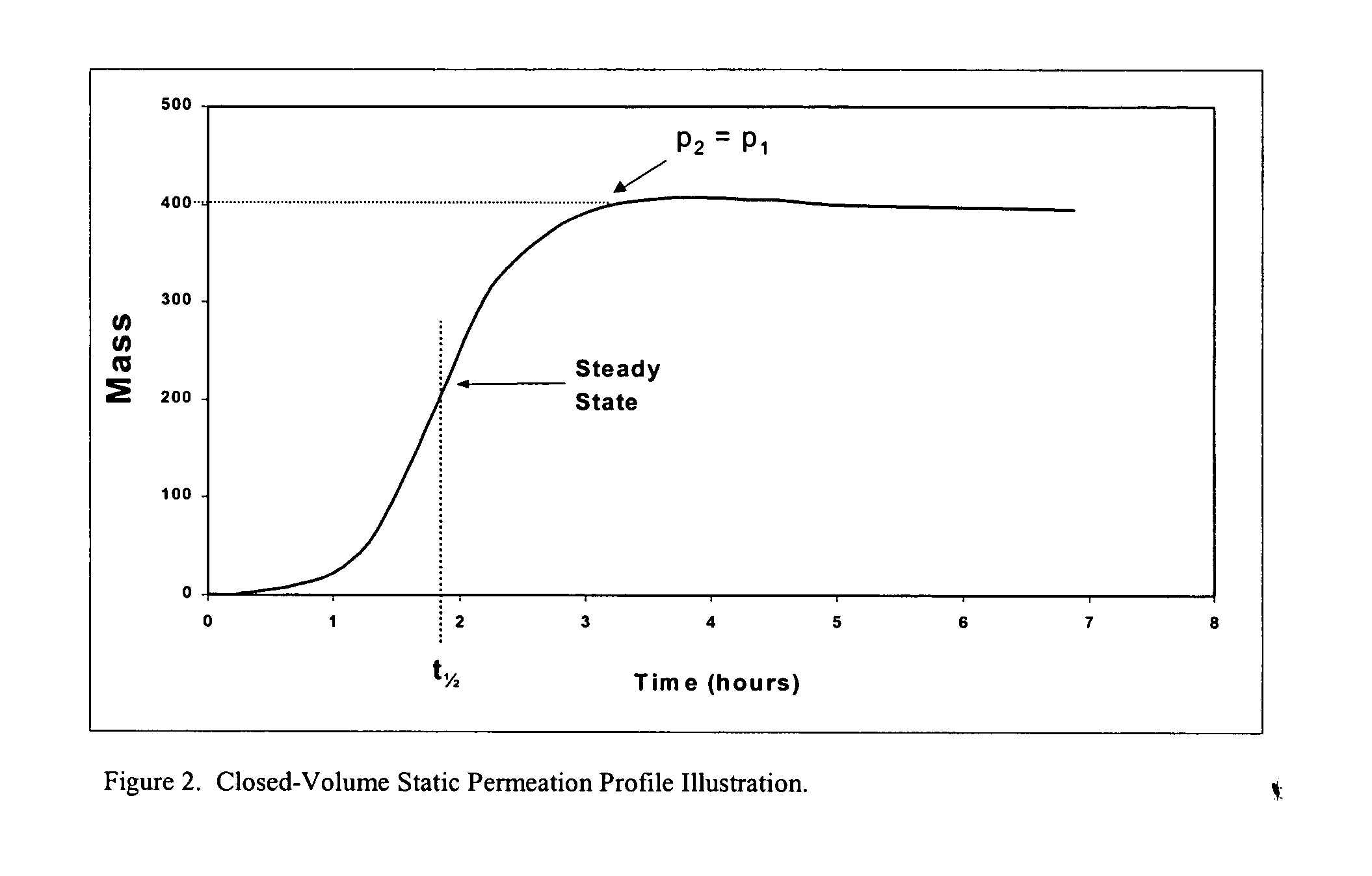Amphoteric grafted barrier materials
- Summary
- Abstract
- Description
- Claims
- Application Information
AI Technical Summary
Benefits of technology
Problems solved by technology
Method used
Image
Examples
example 1
Quantitative Sorption Performance of Melt Blown Web
[0084] Melt blown web reactivity and capacity was measured by placing test webs into a glass jar which is subsequently sealed and then filled with a reactive test vapor. Over the test time period of 30 minutes, the headspace vapor partitions into the fiber. The vapor concentration is measured in the headspace of the glass jar at a specified time (30 minutes). These data are used to quantitatively measure the sorptive web performance. The measured effect of the amphoteric technology and cyclodextrin in the fiber matrix is a reduction in the vapor concentration in the jar compared to PP fiber without the active technology. The partition coefficient and diffusion coefficient were very similar for test webs with and without the active technology since the PP polymer is greater than 90% by weight in the active technology samples. Melt blown test web performance is then a function of the sorption of the amine and carboxylic acid solutes ...
PUM
| Property | Measurement | Unit |
|---|---|---|
| Temperature | aaaaa | aaaaa |
| Temperature | aaaaa | aaaaa |
| Temperature | aaaaa | aaaaa |
Abstract
Description
Claims
Application Information
 Login to View More
Login to View More - R&D
- Intellectual Property
- Life Sciences
- Materials
- Tech Scout
- Unparalleled Data Quality
- Higher Quality Content
- 60% Fewer Hallucinations
Browse by: Latest US Patents, China's latest patents, Technical Efficacy Thesaurus, Application Domain, Technology Topic, Popular Technical Reports.
© 2025 PatSnap. All rights reserved.Legal|Privacy policy|Modern Slavery Act Transparency Statement|Sitemap|About US| Contact US: help@patsnap.com



